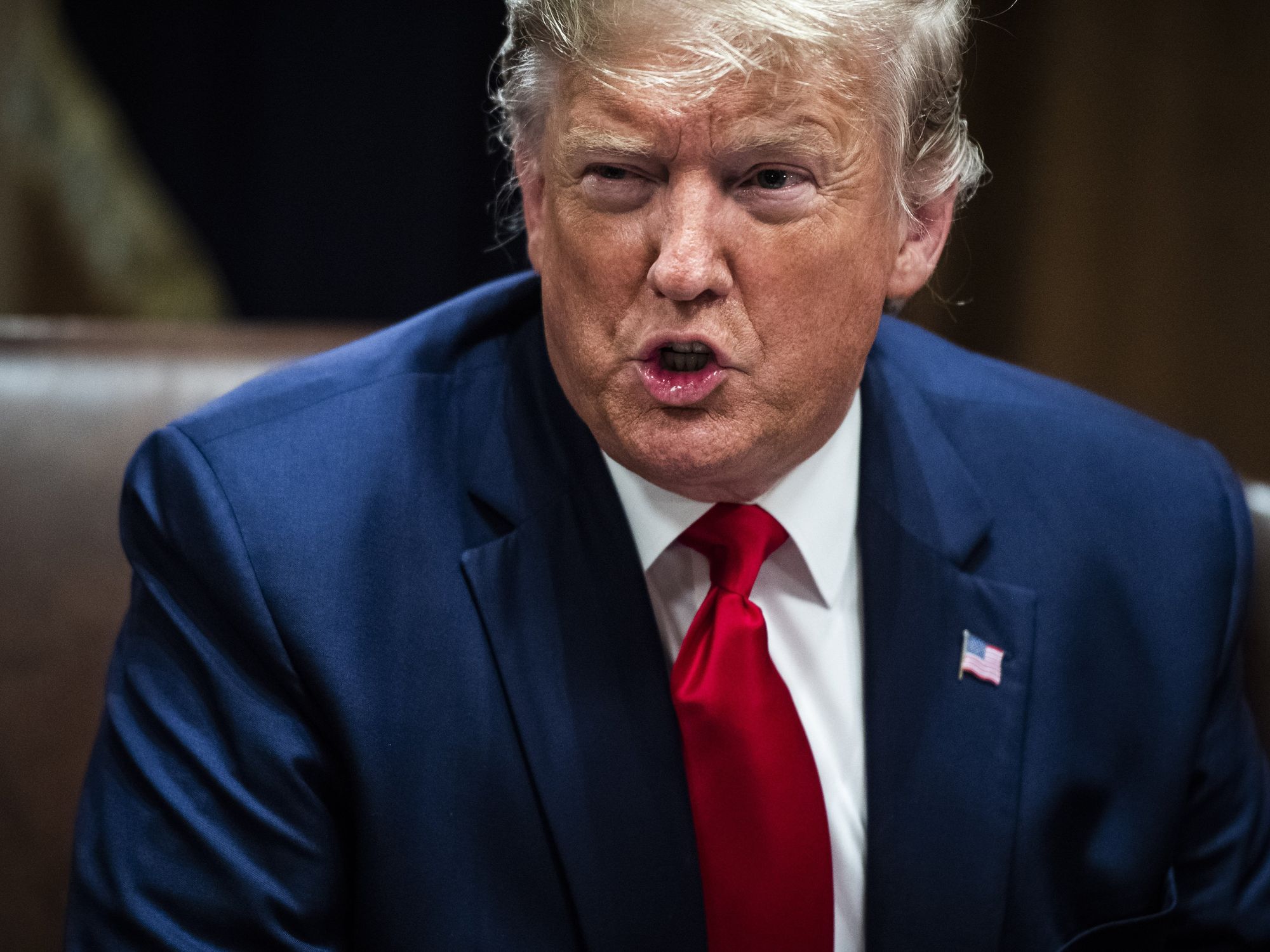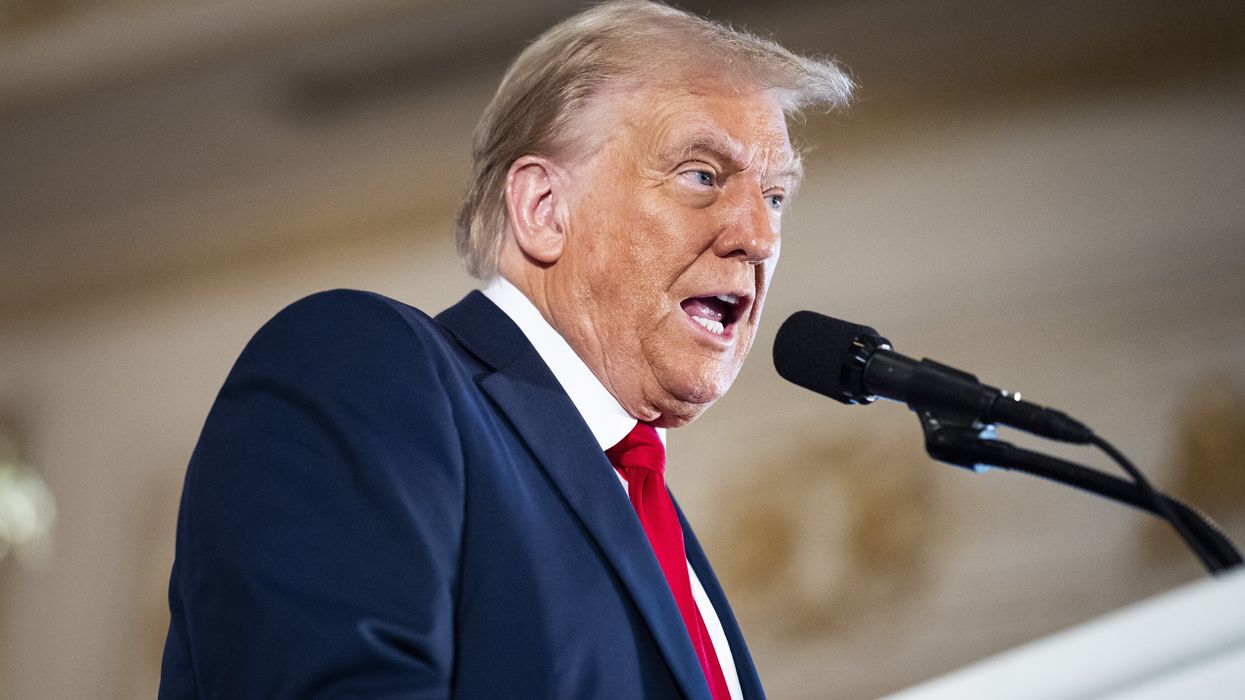Is Trump's Gaza suggestion this week that he intends to relocate the Palestinian population from Gaza and turn the region into “the Riviera of the Middle East” an example of the "Madman Theory" or is it a negotiation tactic?
The term "Madman Theory" is a concept that primarily came into vogue during the presidency of Richard Nixon in the 1970s. Comparisons between the two are now being made after Trump's seemingly crazy comments on Gaza.
The theory revolves around creating an image of being unpredictable and willing to go to extreme lengths, even irrationally, to achieve one's goals. It is based on the premise of projecting this madman persona with the goal of unsettling and intimidating the adversary, making them more likely to concede or negotiate on terms favorable than would happen with a more conventional negotiating approach.
Nixon's administration applied this in the context of the Cold War, hoping to keep adversaries, like the Soviet Union, off balance. Of course, it is a risky approach that relies on the fear of the unknown and the unpredictable response of the opponent, especially when it is played out in an extremely volatile region of the world.
Trump has often projected an image of unpredictability and willingness to take extreme measures either intentionally or unintentionally. Unfortunately, nobody really knows. During his first presidency, he made bold and sometimes erratic statements, such as threatening North Korea with "fire and fury" while also engaging in unprecedented peace talks with Kim Jong Un.
His unpredictability was more recently evident in his trade negotiations with Canada and Mexico, where he threatened tariffs and then suddenly reversed this threat. This style is consistent with what he outlined in his book, "The Art of the Deal," where he emphasized the importance of leverage, boldness, and maintaining a strong negotiating position.
His threats to impose high tariffs on various countries, his willingness to walk away from major trade deals, and his dramatic statements on issues like immigration and foreign policy, all fit into his negotiating style. His supporters argue that this unpredictability strengthened U.S. foreign policy, while critics believe it created instability and uncertainty on the world stage, which is potentially extremely dangerous.
The verdict is still out on who is right.
And it might not just be about negotiating. The use of outlandish statements can also be a distraction technique in addition to or instead of a negotiating tactic if he wants to distract from another unrelated problem the press or Congress is focused on. By making bold and often controversial remarks, he has repeatedly been able to shift media attention away from other issues or problems. This tactic often creates a media frenzy, allowing him to pursue other goals without as much scrutiny.
The outlandish remarks in his first term were many, including injecting disinfectant to treat COVID-19, stating “I know more about ISIS than the generals do” or when he described the state of our nation as “American carnage”. Already in his second term, his suggestion that we annex Canada and Greenland certainly served to overshadow other news and diverted public attention.
Whether Trump is crazy like a fox or just crazy remains to be seen.
SUGGESTION: Trump's "Politainment" showcased with Netanyahu
 Trump’s win demands transformation, not just defense, of democracy
Jabin Botsford/The Washington Post via Getty Images
Trump’s win demands transformation, not just defense, of democracy
Jabin Botsford/The Washington Post via Getty Images
David Nevins is co-publisher of The Fulcrum and co-founder and board chairman of the Bridge Alliance Education Fund.


















A deep look at how "All in the Family" remains a striking mirror of American politics, class tensions, and cultural manipulation—proving its relevance decades later.
All in This American Family
There are a few shows that have aged as eerily well as All in the Family.
It’s not just that it’s still funny and has the feel not of a sit-com, but of unpretentious, working-class theatre. It’s that, decades later, it remains one of the clearest windows into the American psyche. Archie Bunker’s living room has been, as it were, a small stage on which the country has been working through the same contradictions, anxieties, and unresolved traumas that still shape our politics today. The manipulation of the working class, the pitting of neighbor against neighbor, the scapegoating of the vulnerable, the quiet cruelties baked into everyday life—all of it is still here with us. We like to reassure ourselves that we’ve progressed since the early 1970s, but watching the show now forces an unsettling recognition: The structural forces that shaped Archie’s world have barely budged. The same tactics of distraction and division deployed by elites back then are still deployed now, except more efficiently, more sleekly.
Archie himself is the perfect vessel for this continuity. He is bigoted, blustery, reactive, but he is also wounded, anxious, and constantly misled by forces above and beyond him. Norman Lear created Archie not as a monster to be hated (Lear’s genius was to make Archie lovable despite his loathsome stands), but as a man trapped by the political economy of his era: A union worker who feels his country slipping away, yet cannot see the hands that are actually moving it. His anger leaks sideways, onto immigrants, women, “hippies,” and anyone with less power than he has. The real villains—the wealthy, the connected, the manufacturers of grievance—remain safely and comfortably offscreen. That’s part of the show’s key insight: It reveals how elites thrive by making sure working people turn their frustrations against each other rather than upward.
Edith, often dismissed as naive or scatterbrained, functions as the show’s quiet moral center. Her compassion exposes the emotional void in Archie’s worldview and, in doing so, highlights the costs of the divisions that powerful interests cultivate. Meanwhile, Mike the “Meathead” represents a generation trying to break free from those divisions but often trapped in its own loud self-righteousness. Their clashes are not just family arguments but collisions between competing visions of America’s future. And those visions, tellingly, have yet to resolve themselves.
The political context of the show only sharpens its relevance. Premiering in 1971, All in the Family emerged during the Nixon years, when the “Silent Majority” strategy was weaponizing racial resentment, cultural panic, and working-class anxiety to cement power. Archie was a fictional embodiment of the very demographic Nixon sought to mobilize and manipulate. The show exposed, often bluntly, how economic insecurity was being rerouted into cultural hostility. Watching the show today, it’s impossible to miss how closely that logic mirrors the present, from right-wing media ecosystems to politicians who openly rely on stoking grievances rather than addressing root causes.
What makes the show unsettling today is that its satire feels less like a relic and more like a mirror. The demagogic impulses it spotlighted have simply found new platforms. The working-class anger it dramatized has been harvested by political operatives who, like their 1970s predecessors, depend on division to maintain power. The very cultural debates that fueled Archie’s tirades — about immigration, gender roles, race, and national identity—are still being used as tools to distract from wealth concentration and political manipulation.
If anything, the divisions are sharper now because the mechanisms of manipulation are more sophisticated, for much has been learned by The Machine. The same emotional raw material Lear mined for comedy is now algorithmically optimized for outrage. The same social fractures that played out around Archie’s kitchen table now play out on a scale he couldn’t have imagined. But the underlying dynamics haven’t changed at all.
That is why All in the Family feels so contemporary. The country Lear dissected never healed or meaningfully evolved: It simply changed wardrobe. The tensions, prejudices, and insecurities remain, not because individuals failed to grow but because the economic and political forces that thrive on division have only become more entrenched. Until we confront the political economy that kept Archie and Michael locked in an endless loop of circular bickering, the show will remain painfully relevant for another fifty years.
Ahmed Bouzid is the co-founder of The True Representation Movement.